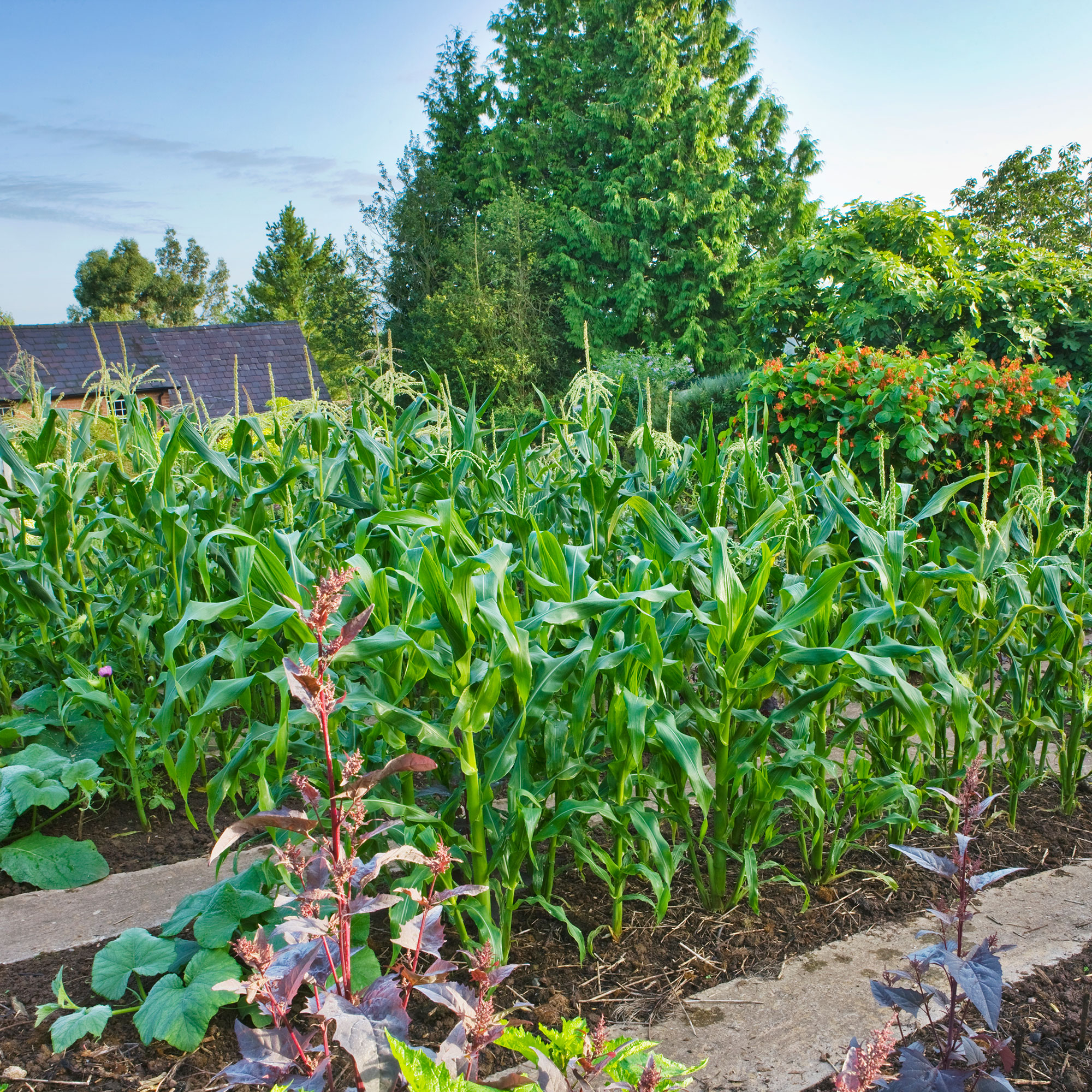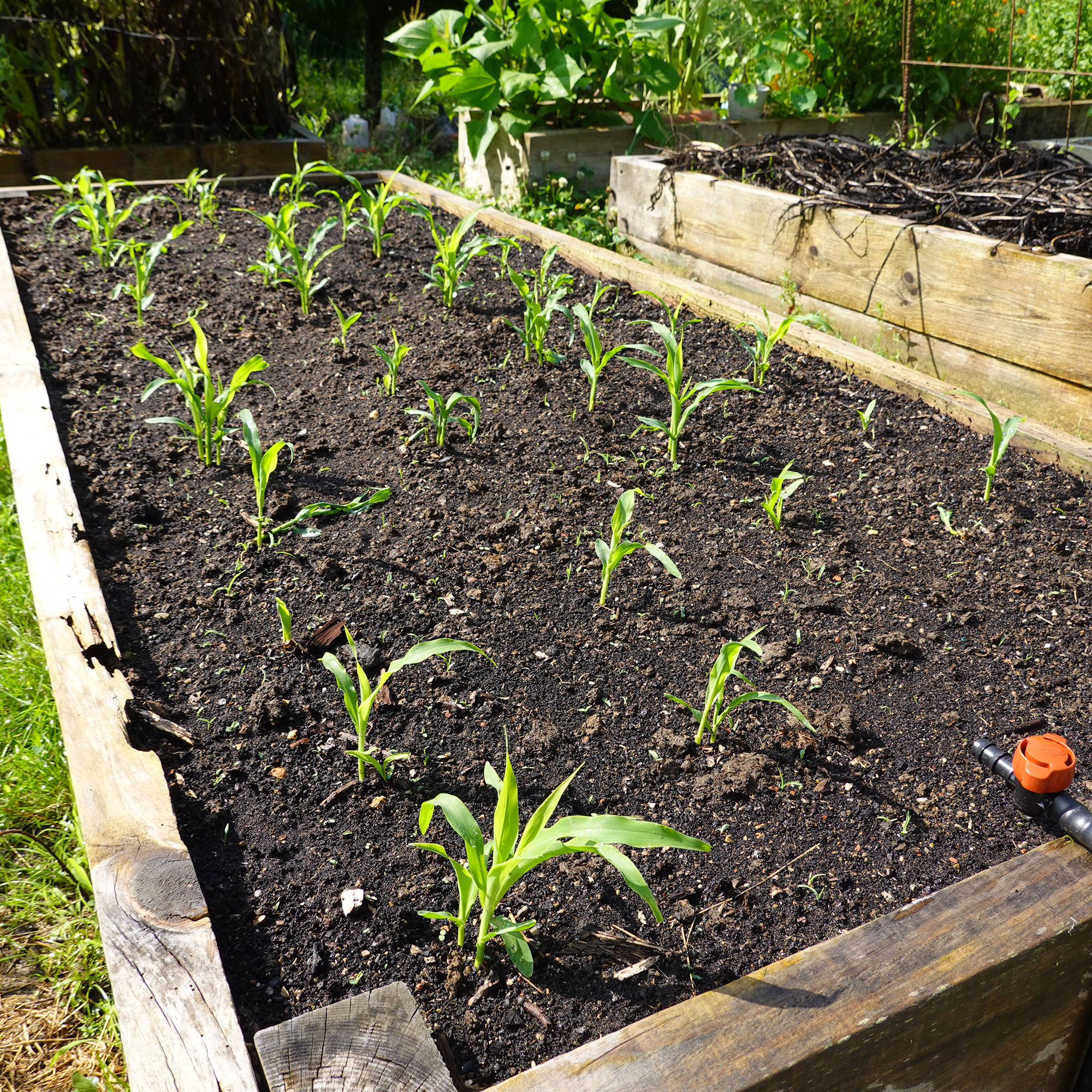
With a burst of natural sweetness that packs some serious nostalgia, homegrown corn cobs (ideally slathered in butter) are synonymous with late summer and autumn. Learning how to grow sweetcorn in your own garden or allotment, then, is the perfect way to ensure you have a steady supply of yellow gold on tap.
The ideal starting point for anyone hoping to grow their own vegetables, sweetcorn is best started off in seeds undercover (or bought as young plants) – and they need a warm, sunny spot to ripen, so this one isn't the best choice for a north-facing garden.
That being said, you don't need lots of space for these plants, as they grow up. So, yes, they're every bit as well suited to a small vegetable garden as they are a large one!

You have two choices when it comes to growing your own sweetcorn – sowing seeds or buying young sweetcorn plants in spring and early summer. Most experts, however, will recommend the former as the best method.
With that in mind, then...
What you need to grow sweetcorn
To grow your own sweetcorn, you will need:
- Sweetcorn seeds (see below for options)
- Small pots or modules, such as the Charles Dowding No Dig CD60 Long-Life Propagation Tray from Amazon
- A good peat-free compost, such as Levington PEAT FREE Seed Compost (with added John Innes) from Amazon
- Well rotted organic matter
- Netting or chicken wire, such as MAIYADUO Floristry Chicken Wire from Amazon
- Bamboo canes, like the LOIBUYZ Bamboo Canes from Amazon
Step-by-step guide
There may be a few fiddly moments to overcome, but it's surprisingly easy to learn how to grow sweetcorn from seed – especially if you time everything just right.
'Sweetcorn should be sown in late spring into small pots or modules with just one or two seeds per pot,' says Morris Hankinson, director of Hopes Grove Nurseries.
Here, then, is what you need to do for the best possible results.
1. Sow your seeds

Like most seeds, sweetcorn needs warmth to germinate, which means a greenhouse is an excellent place to start – or under a propagator, if possible.
'Use a good quality peat free compost and remember that sweetcorn doesn’t really like being disturbed, so it’s a good idea to keep root disturbance to a minimum and sowing only one or two per pot to keep roots from becoming too tangled,' says Morris.
If you don't have a greenhouse or propagator, a sunny windowsill should do the trick. Just be sure to water regularly, taking care not to overwater your seedlings.
2. Harden them off
Once all risk of frost has passed (typically by May or June, depending on your area), it's time to harden off your young plants.
'Sweetcorn plants can be hardened off by standing then outside in the day and bringing them in at night for at least 10 days or more and until the weather has warmed up, the plants are strong and you are ready to plant out,' says Morris.
3. Get planting
When learning how to grow sweetcorn, the Royal Horticultural Society (RHS) says it's best to think of them as a sort of ornamental grass when it comes to planting them successfully.
'Sweetcorn is a type of grass, so is wind pollinated. To maximise pollination, plant in a block or group rather than a long row. That way, each plant is surrounded by several near neighbours, so the chances of successful pollination (resulting in a cob packed with kernels) is much greater, whichever direction the wind blows.'

Of course, there's a bit more to it than just good spacing.
'Make sure the soil has been prepared with some well rotted organic matter first and is in a sunny, sheltered position,' advises Morris.
'Plant each sweetcorn plant about 45cm apart and water well.'
4. Show them some TLC
One of the biggest threats to anyone learning how to grow sweetcorn? Not researching how to get rid of slugs first!
'Young sweetcorn plants are enjoyed by slugs and snails, so make sure you have some protection and water regularly especially in dry weather,' warns Morris.
'An extra mulching session, paying special attention to the base of the growing plants, can be helpful to retain moisture and keep the plants growing upright.'

5. Net them
Slugs and snails aren't the only critters keen to put an end to your sweetcorn growing dreams; the birds will be after your cobs, too.
'Net them! Everyone on my allotment who grows sweetcorn from scratch does this without fail, otherwise the pigeons – or would you believe the parakeets – will absolutely annihilate them,' says award-winning garden designer Zoe Claymore.
It's also advisable to stake them with bamboo canes, to keep them from toppling in the wind.
6. Harvest

The best part of learning how to grow sweetcorn? Eating it, of course!
'The tassels of sweetcorn are instantly recognisable and when they turn brown it’s time to start harvesting,' says Morris.
'Homegrown sweetcorn should be the sweetest sweetcorn you’ve ever tasted! To check they are ready, pull back some of the foliage and press a kernel. If there is a milky consistency to the liquid they are ready to harvest. If the liquid is watery, leave the cobs another day or two.'
When they are ready, simply twist the gently pull the cob off the plant and enjoy fresh.
FAQs
What is the best way to grow sweetcorn?
It's best to grow sweetcorn from seeds undercover, to ensure they get the warmth they need to germinate properly. Then, transplant them to a sunny and well sheltered spot in your garden (taking care to enrich the soil with lots of well rotted matter), and plant them in 34–45cm apart.
Water them well, and be sure to protect them from slugs, snails, and other garden critters, too.
'As the cobs develop, they are loved by mice and squirrels!' says Morris Hankinson from Hopes Grove Nurseries. 'Try netting or chicken wire around the cobs or even using old socks to cover the cobs and give them some protection if needed.'
Can I grow sweetcorn in pots?
Due to their height, it is not advisable to grow sweetcorn in pots. Try one of the other many best vegetables to grow in pots instead, or try one of those crops that will positively thrive in hanging baskets.
And just like that, you know how to grow sweetcorn like a gardening pro. Now all that's left to do is decide which recipes you'll be using yours in (although, personally, we'll be sticking to grilled cobs with butter).







